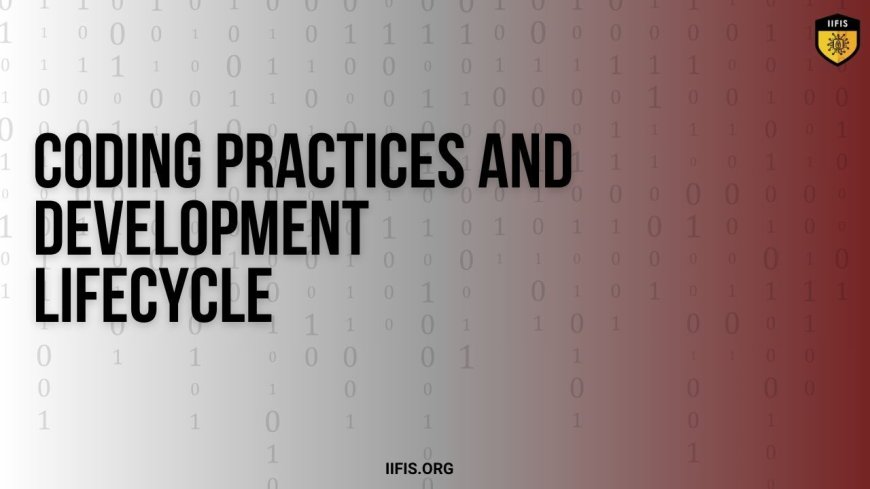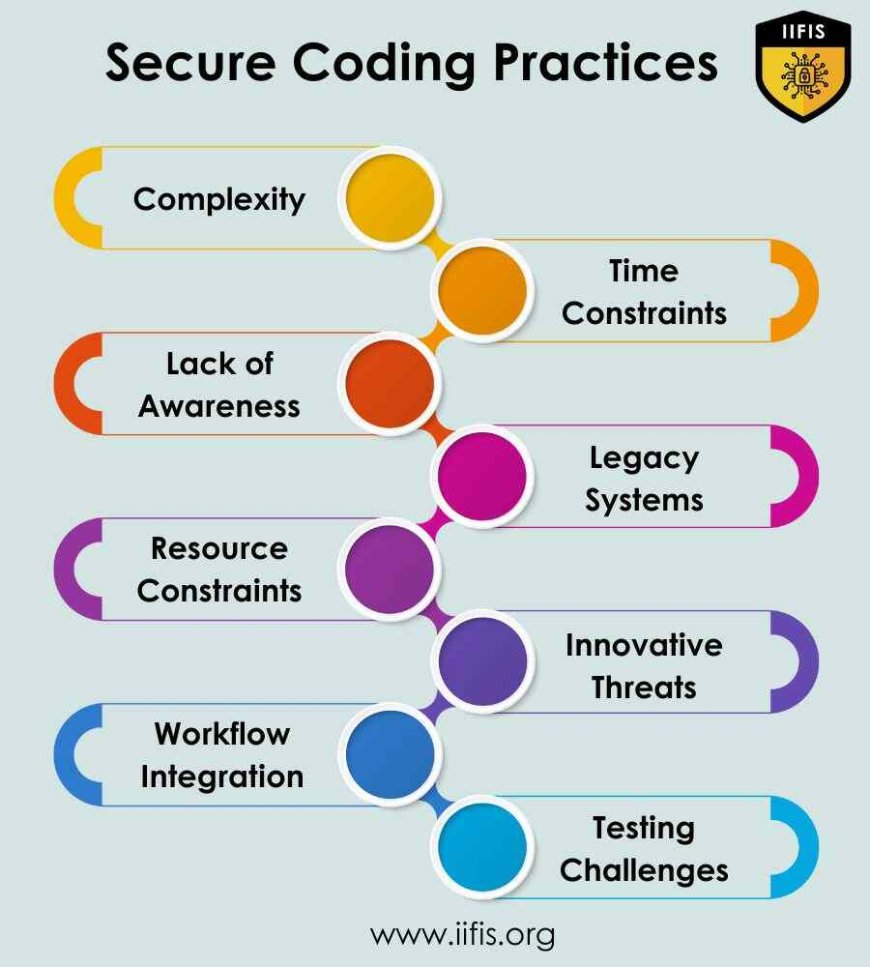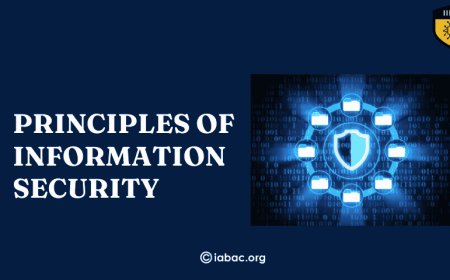Secure Coding Practices and Development Lifecycle
Learn essential secure coding practices and development lifecycle methods to protect software from cyber threats and ensure data integrity.

Secure coding techniques are crucial in software development. They make sure private information, including financial and personal data, is shielded from unwanted access. Developers can prevent weaknesses from being introduced, preserve the integrity of the program, and lower the possibility that bad actors will take advantage of their work by following these guidelines. Incorporating security measures early in the development process also guarantees adherence to industry standards, reduces expenses related to fixing security flaws after deployment, and protects the company's reputation.
Secure coding techniques may promote innovation by motivating programmers to come up with original solutions to security problems without sacrificing security. They support ensuring that software products are viable over the long run by making it more difficult for hackers to exploit weaknesses. By instilling confidence in users, these behaviors improve user pleasure and loyalty to the application generally.
Discuss the challenges faced by developers in implementing secure coding practices
-
Complexity: Software systems can be complex, with many different parts functioning in different ways. It needs an in-depth understanding of possible weaknesses and how to handle them within this complexity to implement secure coding methods.
-
Time Constraints: Software developers frequently have to produce their work within strict deadlines, which can make it difficult to give security measures priority. Careful planning and resource allocation are necessary to strike a balance between the requirement for on-time delivery and the application of rigorous security procedures.
-
Lack of Awareness: Some developers may possess a thorough understanding of secure coding techniques and their significance. To increase awareness and guarantee that developers know how to use security measures correctly, education and training are crucial.
-
Legacy Systems: Updating or maintaining old systems that were not created with security in mind is a common task for software projects. It can be difficult and time-consuming to retrofit ancient systems with contemporary security measures, necessitating careful consideration of backward compatibility and potential effects on current functionality.
-
Resource Constraints: Smaller development teams and businesses with fewer resources can find it difficult to devote enough time and personnel to properly handle security problems. As a result, other development tasks may take precedence over security precautions.
-
Innovative Threat Environment: The cybersecurity threat environment is dynamic, with new attack paths and vulnerabilities appearing regularly. For developers, staying current with security best practices and modifying code approaches properly is always a difficulty.
-
Integration with Development Workflow: The ideal integration of secure coding methods with the development cycle would be seamless. All team members must carefully coordinate and support the inclusion of security checks and reviews at every level of development, as doing so can interfere with workflows and established practices.
-
Testing Challenges: Making secure coding approaches work as intended requires rigorous testing. Testing for security flaws, however, can be difficult and necessitate knowledge and resources beyond conventional testing methods.

What are the key principles and best practices for secure coding?
Input Validation:
-
To avoid injection attacks like SQL injection and cross-site scripting (XSS), always verify and sanitize user input. This verifies that the application processes only intended and secure data.
Output Encoding:
-
Encode output by transforming potentially harmful characters into the appropriate HTML entities to stop XSS attacks. This ensures that data provided by users is shown as intended without compromising system security.
Authentication and Authorization:
-
Enforce appropriate authorization to limit access to important resources based on user roles and permissions, and implement robust authentication procedures to confirm users' identities.
Secure Password Handling:
-
Use working techniques such as bcrypt or Argon2 to securely store passwords, and impose password complexity requirements to avoid cracking attacks.
Session Management:
-
To defend against the hacking of sessions and fixation attacks, use secure session management strategies like expiration policies and session tokens.
Secure Communication:
-
Use protocols like HTTPS to protect sensitive data being transported over networks to guard against man-in-the-middle attacks and observing.
Error Handling:
-
Use appropriate error handling procedures to ensure that error messages reveal as little information about the system as possible, preventing attackers from using error information to exploit problems.
Secure Configuration:
-
Minimize the attack surface and minimize possible risks to security by configuring the application and its underlying components securely following professional best practices and guidelines.
Secure File Handling:
-
To minimize hacking issues and file inclusion, limit file permissions, validate file uploads, and avoid running files from untrusted sources.
Security Testing:
-
To find and fix security flaws throughout the development lifecycle, conduct routine security assessments using techniques like penetration testing, static analysis, and code reviews.
Types of Source Code
-
Compiled Source Code: Programmers use languages like C, C++, or Java to write code like this. It requires the use of a unique program known as a compiler to convert it into machine code so that computers may read it directly. The computer can run it after it has been compiled.
-
Interpreted Source Code: When interpreted code is run, it doesn't require translation, in contrast to compiled code. Interpreted languages include Python, JavaScript, and Ruby. The interpreter, a separate software, reads and runs the code line by line.
-
Scripting Source Code: Scripts are little programs that can be used to expand functionality or automate operations. They're frequently written in Perl, PowerShell, or Bash. Usually interpreted, scripts help maintain system configurations or automate repetitive processes.
-
Markup Source Code: The structure and presentation of content, especially on the web, are defined by this kind of code. Web pages are often created using HTML, a popular markup language, and XML, which is used for data transfer and storage. Other programs, such as web browsers, receive instructions from markup code on how to display or handle content.
-
Assembly Source Code: A more understandable form of machine code at a lower level is assembly code. It is unique to a computer's hardware design and is employed by developers who require exact control over hardware resources or improvements in performance.
Software security and the protection of sensitive data depend heavily on secure coding techniques. Implementation may be impeded by issues including complexity, time restraints, and resource shortages. Secure communication, output encoding, input validation, and identification are important concepts. It's imperative to do regular security testing. Understanding various forms of source code, including compiled and interpreted ones, facilitates the efficient implementation of security protocols. Early security priority in development reduces risks, boosts user trust, and encourages creativity. Developers can lower dangers, stop breaches, and guarantee the long-term survival of software products by following best practices.























